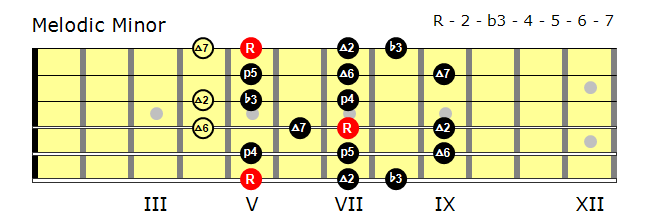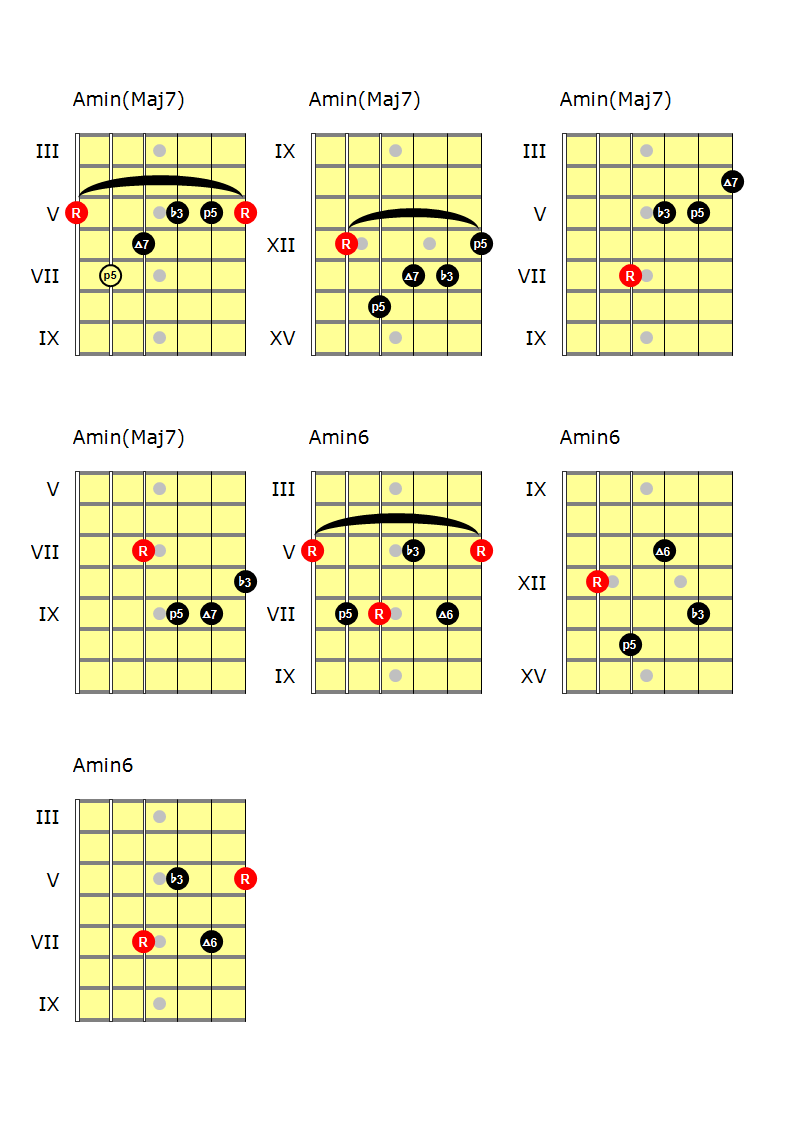This is the start of a series of posts about the modes of the Melodic Minor scale. This post covers mode 1, the Melodic Minor scale itself.
Scale formula
The formula for the Melodic Minor scale is:
R - 2 - b3 - 4 - 5 - 6 - 7
So, there’s only one note different from the Major scale; the b3.

For a full set of fingerings refer to this post.
Chords
- min(Maj7)
- min6 and possibly other minor chords.
Possible extensions/tensions: 9, 11, 13

Usage
- Playing over min(Maj7) chords.
- Playing over a Dorian chord.
- This breaks a few rules but it works.
- There is only 1 note different (a 7 instead of a b7).
- Playing over a IV minor chord (see below).
It is common to change a IV chord – that’s usually major – to a minor. When you do this the chord is functioning a bit like a dominant chord. It provides a dramatic tension that needs to be resolved. Everything in the chord resolves by a semitone back to the I chord.
For example take the key of C major. The IV chord should be F major. But if we change it to a minor – which is not diatonic – we can see how it functions when we move back to a C major chord.
Fm triad: F - Ab - C Cmaj triad: C - E - G
You can see that that the F -> E and the Ab -> G, each moving down a semitone.
In effect, when we use a minor IV chord we are actually dipping in to a parallel mode of the major scale and borrowing a chord from there. We could also borrow from melodic minor instead. This produces very dark sounding minor tonality. In this case the chord would be Fmin/Maj7.
